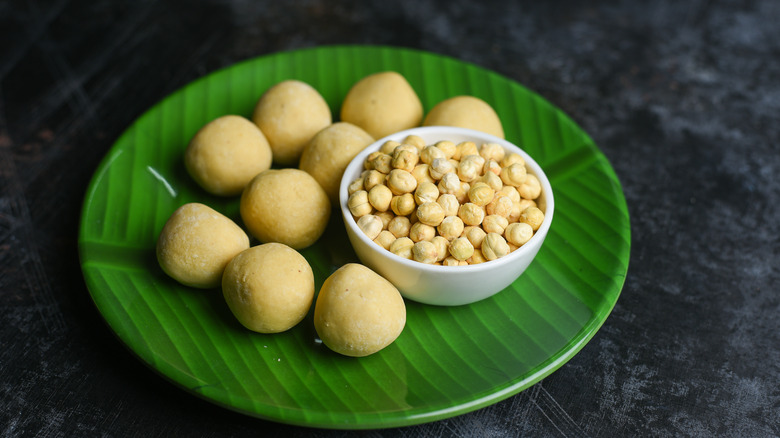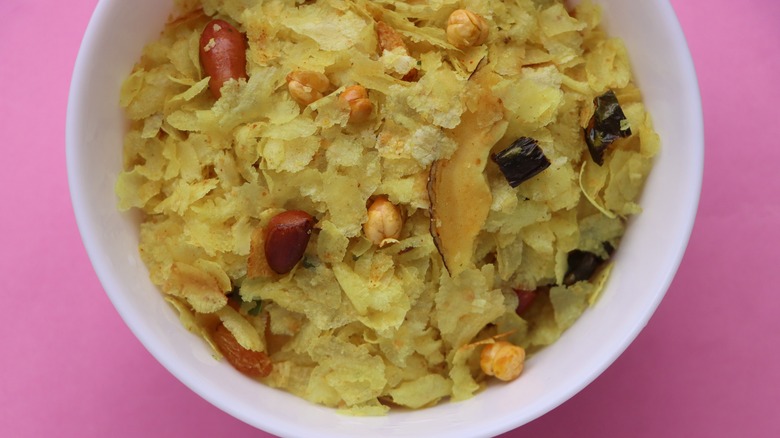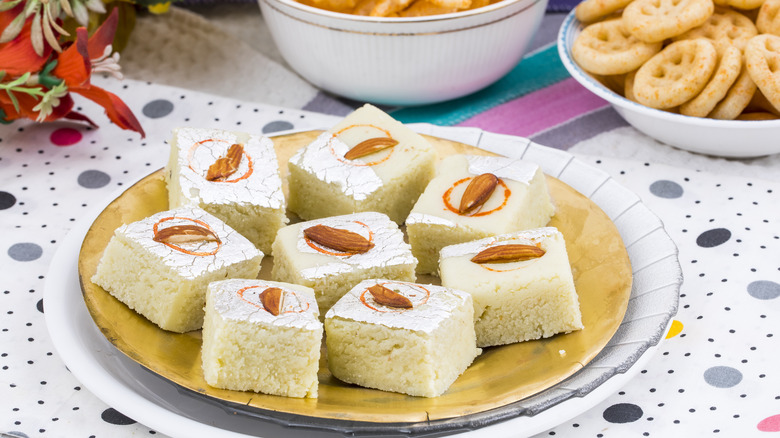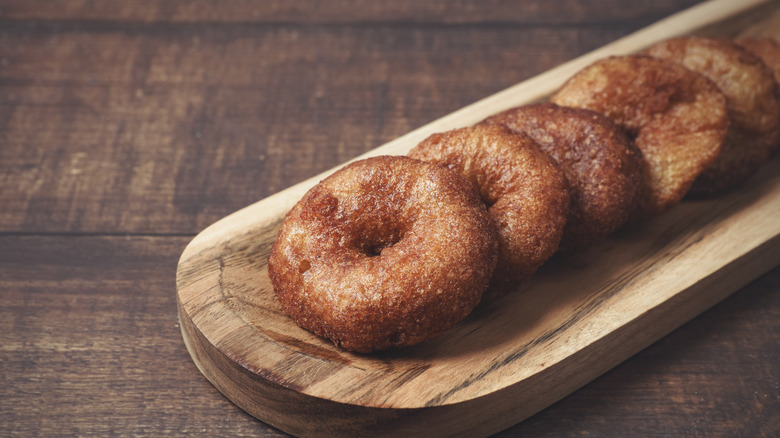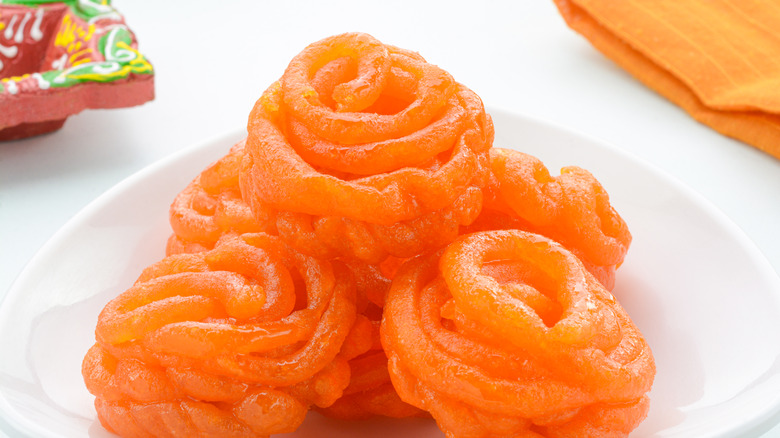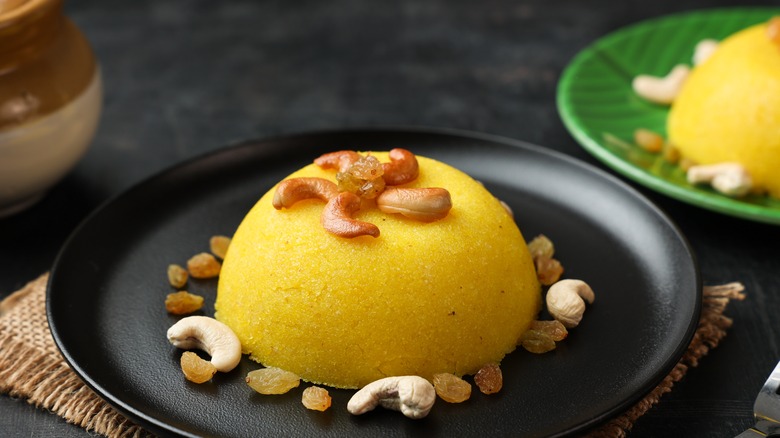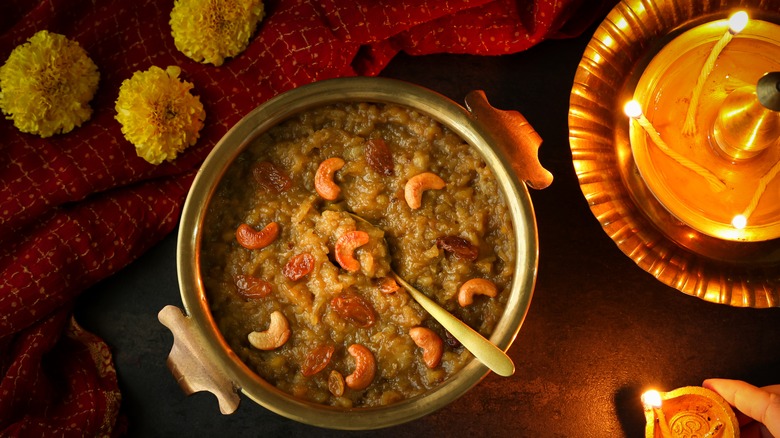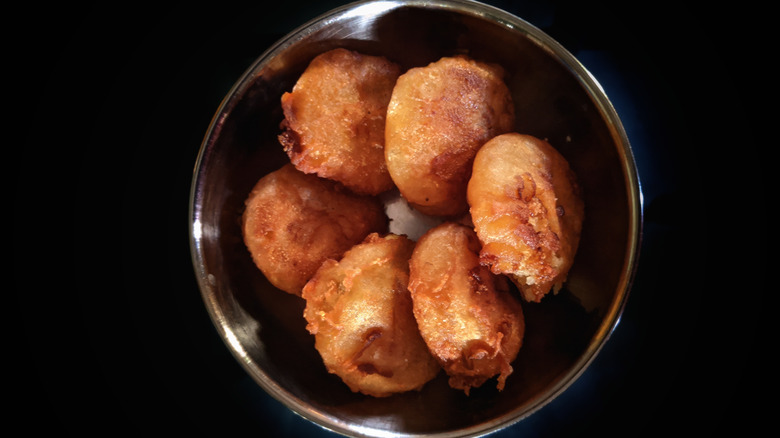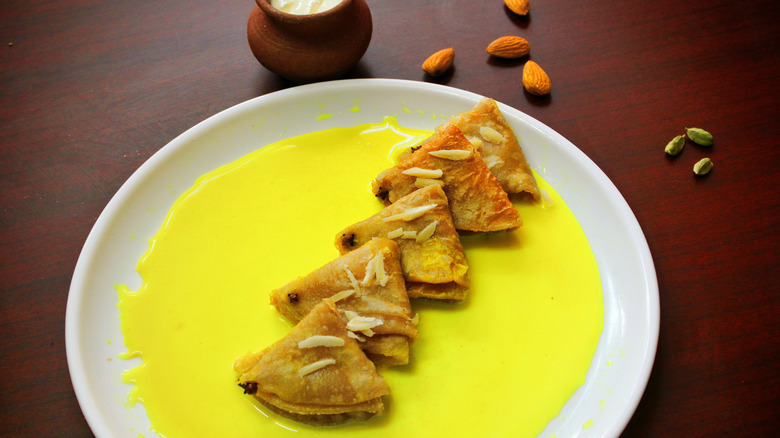23 South Indian Mithai, Explained
All across India, there are delicious mithai to be had, from the western Indian mithai that often use milk, cardamom, and tropical fruits and nuts, to northern Indian mithai that have been historically been influenced by traders and will help you get through a cold winter. In the states of southern India, where jaggery, coconut, rice, and dal are plentiful, you can find some of the most scrumptious mithai India has to offer. These ingredients have a strong cultural importance to the cuisines of Karnataka, Kerala, Tamil Nadu, Andhra Pradesh, and Telangana, which make up the southern region of India. Furthermore, the ingredients can be brought together in an infinite number of ways to create chewy, soft, fudgy, crispy, and always sweet, mithai.
With countless variations and rich histories linking many of these mithai to festivals and celebrations, many of these mithai are both delicious and play integral parts in southern Indian culture. If you are a coconut lover, or simply adore the rich and caramel-y flavor of jaggery, then many of these mithai will tickle your fancy. We hope that you take a look at the desserts that we have gathered here, and delve even deeper into the magical world of mithai because this list only scratches the very surface.
Mysore pak
Mysore pak is an extremely famous sweet from the city of Mysore in the southern state of Karnataka. It is believed that the origins of this mithai can be traced all the back to their creator, Chief Kakasura Maddapa, who was a sweets maker and lover. Today, the ancestors of Maddapa still make delectable mysore pak available for sale at their store Guru Sweets (via Karnataka).
This beloved mithai is made from ghee, and plenty of it, along with besan or gram flour (chickpea flour) and sugar. These three simple ingredients combine to make a dessert that is dense, nutty, and perfectly sweet with a wonderful nuttiness. Thanks to the chickpea flour, mysore pak are delightfully crumbly, which makes them the perfect accompaniment for a cup of tea.
Sunnundalu
Sunnundalu, also known as urad dal ladoo, is a type of ladoo from southern India. Ladoos are common types of mithai found all across India that come in countless variations. Some have as few as three ingredients, while others, like sunnundalu, can have more components like nuts, which add color and texture. This variation is made from urad dal, also known as black gram, which also gives sunnundalu its distinctive color and taste.
Sunnundalus are made from urad dal, sugar, and ghee, and the protein from both the dal and ghee makes this a common snack for growing children. It is commonly made for Hindu festivals in Andhra Pradesh, and it is also often enjoyed as a snack, thanks to the savoriness of the urad dal.
Maladu
This mithai is very common in southern India, specifically in Kerla and Tamil Nadu. In these regions, maladu, also spelled maa ladoo, is often made to celebrate large festivals like Diwali. Made with similar ingredients to the well-known besan ladoo, maladu differs from besan ladoo in its preparation since it requires much less ghee to make it.
Maladu is made from besan, sugar, and ghee, and it is often flavored with cardamom. Some recipes also call for cashews which add more of a creamy, chewy texture, rather than the classic crumbly and melt-in-your-mouth texture maladu is famous for. To add even more flavor to these wonderful mithai, you can also make them with jaggery (raw sugar) which absolutely transforms the flavor of the maladu.
Godu phovu
This sweet, made from rice flakes, seeds, jaggary, and cardamom, is especially important to the Gaud Saraswat Brahmin who live in the south of India and use this mithai as Naivedyam, which are Hindu food offerings. Godu phovu is also often eaten as a snack and enjoyed for its sweetness, which comes from the jaggery, and slight nuttiness, which comes from the seeds.
Godu phovu is the perfect fix when you are looking for a small, sweet bite, and, on top of that, it is easy to make. To make this sweet delight, you simply combine the jaggery and a bit of water until the jaggery is melted. At this point, you can stir in the rice flakes, seeds, and cardamom to watch your hard work transform into this beloved mithai, godu phovu.
Coconut burfi
Traditionally made with fresh grated coconut, sugar, and green cardamom, coconut burfi can be difficult to make at home if you do not have fresh coconut. However, coconut burfi can be made with dry coconut, which rehydrates when cooked with sweetened condensed milk. Then the magic happens, and the wonderfully fresh coconut flavor shines through in this slightly crunchy, slightly chewy, and very satisfying sweet.
Burfi is an umbrella term for many Indian mithai that are milk-based, dense, and often cut into brick shapes. Coconut burfi are one of the simplest kinds of burfi to make and are so loved that they are a staple in Diwali mithai boxes. You can also sometimes find coconut burfi topped with dry fruits or nuts for additional flavor or garnish.
Ariselu
Known by many names in many languages, ariselu, also known as kajjayya, anarsa, and adhirasam is a sweet made from jaggery, rice flour, and topped with seeds. Some recipes call for whole rice to be soaked and ground, rather than rice flour. This process is more drawn out and labor intensive, but worth the extra effort. The dough is shaped into flat rounds and then deep-fried to give the whole mithai a delicious crunch. The rice flour also adds a lovely density and slight chew to the inside texture, which complements the complex sweetness of the jaggery.
Ariselu is particularly beloved in the city of Chennai, formerly known as Madras, in the state of Andhra Pradesh. These fried rings of goodness are also commonly made and eaten for many festivals, especially the festival of Sankranti.
Jangiri
Very similar in look to jalebi, a classic northern Indian mithai, but different in terms of ingredients and taste, jangiri are their own very special creations. Jangiri is a type of Indian mithai that is made from urad dal, fried, then it is soaked in a sweet, often rose-flavored, syrup. The final jangiri comes out shaped in rings (as you can see in the image above) with curly cues lining the outside.
The key to making wonderfully crispy, chewy, and perfectly soaked jangiri is in the batter. The urad dal must be soaked and blended until it is very smooth in order to ensure that the batter has no lumps. Then, sugar syrup is added and the final batter is piped into hot oil in the specific jangiri shape.
Badusha
Popular in both north and south India, badusha, also known as balushani, are fried rounds of dough that some claim resemble donuts. However, unlike donuts, badusha are dense and flaky with a distinctive crunch on the outside, rather than soft and squishy donuts. Known as balushani in the north, and badusha in the south, this simple yet elegant dessert is a showstopper.
The dough is made from ghee, wheat flour, and milk curds, which combine to create the dense and decadent inside that badusha is loved for. When you bite into this dense, cakey dough with its irresistible crunch and sweetness of the outside, you will understand why badusha are so beloved. Wherever you are in India, you can find these fried dumplings in mithai shops especially during Diwali when badusha are extra special.
Rava kesari
Rava kesari is a traditional sweet from the south of India that is made from ghee, semolina, and sugar. The semolina cooks down into a soft paste which makes it mushy but still textured from the semolina grains. It is also often topped with nuts such as cashews, or dried fruit. The final result, a perfect scoop of rava kesari, is incredibly comforting, satisfying, and both sweet and buttery. What else could you ask for?
Other variations of kesari are also popular such as pineapple kesari. This version of the famous mithai is made with fresh pineapple along with the traditional semolina. The fruit adds an additional layer of tang and sweetness to the dish, further elevating the flavor of the semolina and saffron.
Payasam
Payasam is a south Indian milk pudding that is often sweetened with jaggary and topped with nuts. It is very similar to kheer, which is pretty popular across India, especially in the northern states. One subtle difference between kheer and payasam is that kheer does not often use ghee while payasam does, but regardless, both kheer and payasam are seen as very auspicious foods.
Like many foods, different preparation methods and varieties of payasam are plentiful across India and the world. For example, there is a version called semiya payasam. Semiya is actually the Telugu word for vermicelli noodles. This payasam version is very popular because, thanks to the vermicelli's pretty quick cooking time, it can be whipped up in under 20 minutes (amazing).
Chakkara pongal
Pongal is a widely celebrated festival in southern India, specifically in Tamil Nadu. It celebrates the sun god and lord Indra, and over the four-day festival, it is common for many, many mithai to be eaten. Among the most popular is chakkara pongal, which is a sweet milk rice pudding also commonly made with dal.
You can thank the milk and jaggery for the delectable and rich flavor that chakkara pongal is especially beloved for. As the chakkara pongal cooks, the milk reduces and it creates a thick and creamy pudding that is comforting and especially satisfying, all thanks to the rice. There is also another version of pongal that's less popular but equally delicious called venn pongal, which is made from ghee.
Unniyappam
Made from rice or wheat flour, banana, jaggery, and coconut, unniyappam are small dumpling-like desserts that are pure bliss. From being fried in a special pan that has shallow scoops and in some ways resembles a takoyaki pan, unniyappams have a signature domed belly that is delightfully crispy and golden brown.
These desserts are also often made with sesame seeds, which add a very welcome layer of nuttiness and crunch to these snacks. Regardless of if you use sesame seeds, the combination of coconut with the caramel flavor of the jaggery is part of what makes unniyappam so delicious. If you are really looking to challenge yourself, try making unniyappam from soaked rice rather than rice flour, and see how grinding the rice yourself makes a difference in both satisfaction and taste.
Sweet idli
Idli are widely loved and devoured, so good news — you can eat them for dessert, too. Sweet idli are a slightly sweeter version of the traditional idli and make for a delicious breakfast. They can be sweetened with sugar, but most commonly with jaggery, and finally topped with some coconut.
All across southern India, there are many versions of sweet idlis. Often made from moong dal and rice, these small steamed rice bread are scrumptious and easy to inhale. The key to perfect sweet idli batter is having a thick plain idli batter to start with. Then, when you go to add in the jaggery syrup your sweet idli batter will remain thick enough to hold its shape during the steaming process.
Ela ada
Ela, meaning banana leaf, and ada, referring to this mithai's filling consisting of rice flour, jaggery, and coconut, makes up the Kerali dessert ela ada. As you may be able to derive, this dessert is made from rice flour, jaggery, and coconut, which are all steamed in a banana leaf until the rice flour is cooked and the inside is gooey, chewy, and fragrant from the leaf.
This mithai is eaten all year round, but it is also specifically enjoyed for the festival Onan. Onam is one of the largest festivals in Kerla, lasting 10 days and celebrating the return of King Mahabali. One of the absolute best ways to celebrate Onam is by making it from scratch and eating the beloved ela ada.
Kobbari boorelu
If you have not noticed by now, south Indian food and mithai pay true homage to rice and fermented rice. Kobbari boorelu are no different. To make these fried snacks, you must soak your rice overnight, let it dry, and then grind it into a powder before mixing it with jaggery and coconut. Some cardamom and sesame seeds can also be added for additional layers of crunch and flavor.
Sushma also explains that this mithai is very special to the state of Andhra Pradesh, and kobbari boorelus are often eaten during festivals, specifically along the coast. Whether you are on the southern coast of India or not, making and indulging in kobbari boorelus is a great idea. These fried sweets will stay good if you make them in a large batch, but we doubt that you will be able to resist devouring them for so long.
Kozhukattai
Very similar to Maharashtrian modak, kozhukattai have their very own cohort of pretty dedicated followers in the south of India where this mithai hails from. Made with a rice dough that is filled most commonly with jaggery and coconut (though there are variations), and the dumplings are then steamed and enjoyed. There are variations of kozhukattai all across the southern states of India, with some coming with savory or sweet fillings.
Kozhukattai fans famously defend it with claims that this mithai is much more versatile than the rival modak. The sheer variety of types of kozhukattais sets them apart from modak, and also makes them the perfect dessert for Ganesh Chaturthi, or Vinayaka Chaturthi, which is the more commonly celebrated festival in Tamil Nadu.
Paal poli
This delicious and decadent dessert is often made to celebrate the festival of lights, Diwali. It is made with pooris, which are deep-fried doughs, made from mawa (milk solids) or wheat that are then soaked in milk rabdi. The combination of the poori and the rabdi come together to make paal poli, a very common dessert specifically in Tamil Nadu and Andhra Pradesh cuisines.
To make paal poli, you must first make the poori to your liking, with either mawa or wheat flour or a combination of them both (you can decide the specific flour ratios). Whichever way you choose, the final paal poli will be most delightful once it has soaked in the thick, sweet rabdi and has absorbed the absolutely luxurious flavors.
Holige
Holige, also known as obbattu in Kannada, bobbattlu in Telugu, puran poli in Hindi, and paruppu boli in Tamil, is a common dessert that goes by many names in many languages. It is also an important Neivedyam in the southern states of Karnataka and Andhra Pradesh, and all across the country.
Chitra explains that it can be filled with dal, coconut, or chana dal. Chana dal is a common filling in the southern state of Tamil Nadu. But what is this mithai exaclty? Holiges resemble roti or chapati, and are often made from wheat flour. The dough must be left to rest and ferment for a minimum of six hours, and using plenty of oil or ghee ensures that your holige will turn out delicious.
Padhir peni
This scrumptious mithai from Tamil Nadu is everything you could ask for in a sweet south Indian dessert. The perfect padhir peni is crunchy, sweet, buttery, and flakey, making it a sensation to eat and marvel at. Padhir peni gets their signature layers from being laminated with butter. After lamination and being rolled out, they are then deep fried and enjoyed warm or at room temperature. Padhir peni, are a delicious evening snack and are also often a Diwali and wedding staple.
These flakey disks of dough are very similar to other sweets called madatha kaja and chiroti. Madatha kaja is essentially padhir peni that is soaked in a simple syrup, while chirotis are often made with semolina flour and dusted with powdered sugar.
Dharwad peda
This dessert, which comes from northern Karnataka, has a dark and nutty flavor that comes from its extra-special preparation. Made from milk solids that are toasted until they are light brown, dharwad peda gets its lovely caramel flavor from the toasted milk. When roasting milk, you must make sure to use medium heat to avoid burning it or curdling it.
If you are a fudge or caramel lover, then dharwad pedas are the mithai for you. They are made almost entirely from milk and flavored lightly with cardamom to add floral notes to this chewy and dense sweet. On top of that, the roasted flavor of the milk truly shines through in this simple yet delectable mithai, making them rich and complex in flavor.
Rava ladoo
This dessert, which goes by many names, the most common three being rava ladoo, suji ladu, and rave unde, is a popular type of ladoo from Karnataka. Ladoo is the general name for a type of mithai made from ghee which is then mixed with various roasted grains or flours and then rolled into balls, and they are found all across India in a wide variety.
Rava ladoo are specifically made from semolina flour and ghee. We recommend that you use fresh ghee when making rava ladoo to ensure that you get the best rava ladoo possible. The freshness and quality of the ghee will determine not only the flavor you get but also the shade of color your final rava ladoo will have.
Ada pradhaman
Ada pradhaman is a rice pudding that originates from Kerala and celebrates many of the beloved ingredients that are bountiful in southern India; coconut, jaggery, and rice. This pudding, which is very similar to another pudding called palada pradhaman or payasam, is made from coconut milk rather than cow's milk (or any other milk alternative).
Ada pradhaman is a very traditional dessert and plays an important role in Kerali culture, where it is included in the Onam Sadhya, a traditional meal in Kerala. It is made with fresh coconut along with coconut water and milk, making the final mithai a coconut extravaganza. The alluring coconut flavor, combined with small bites of rice makes ada pradhaman a comforting and delicious dessert many people in south India enjoy.
Kozhikode halwa
While halwas elsewhere in India are often made with ghee, in the Kerala city of Kozhikode, the halwa is made using coconut oil. However, Kozhikode's halwa is famous not only for its subtle coconut flavor but also for its fun variations that are nothing like northern Indian halwa. Available in flavors such as chili and passion fruit, the halwa from Kozhikode is iconic and is totally a must-try south Indian sweet.
Another famous Kozhikode halwa, which is from the Malabar region, is banana halwa, which is made from a specific kind of banana called Nendran. These special bananas are mashed and stewed for hours upon hours with coconut oil and cardamom to create a thick, tender halwa that becomes chewy and delicious. Yum!



